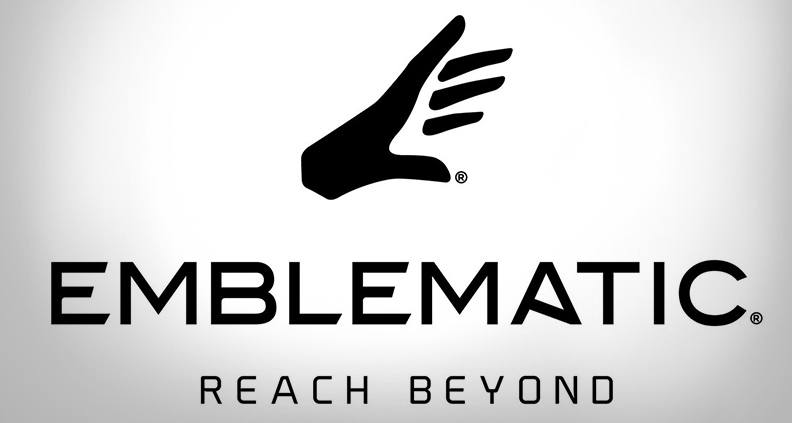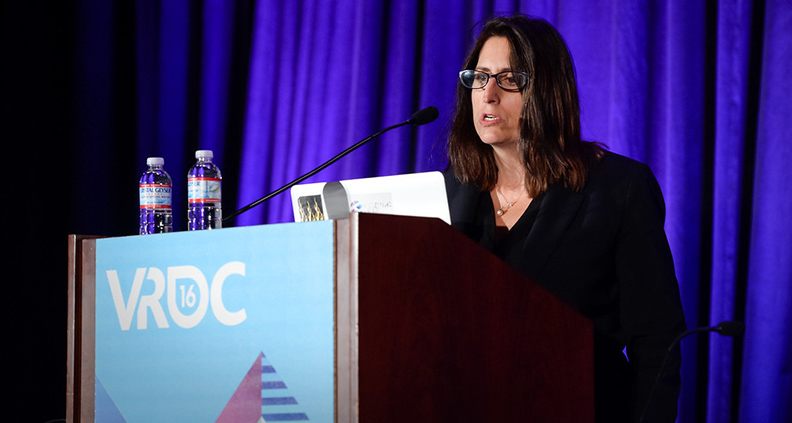Immersive Entertainment Leaders Emblematic Group Move Freely Across the VR Space
Any time something new and shiny comes along it’s inevitable that artists and creators will gather around whatever the thing and wonder: “Hmm, what could I do with this?” Wheels turning and ideas sparking, it’s how we get innovations as innocuous as the TV dinner and as ambitious as the Large Hadron Collider. Somewhere in-between the two lies the ever-expanding world of VR and immersive entertainment, which in and of itself is a world awash with experiential and technological niches, derivations and subgenres.
One such pioneering creative force is VR leaders Emblematic Group, a production company focused on creating “high impact” immersive experiences spanning virtual reality (VR), augmented reality (AR) and mixed reality (MR), with a specific focus on “volumetric content”—experiences that place users within an immersive 360-degree video environment while also giving them the agency to freely move within the space, which Emblematic Group has used for a wide variety of socially-conscious projects.
We recently spoke to Emblematic Group Director of Development, Meghan McWilliams, and Senior Producer, Cedric Gamelin, about Emblematic Group—established in 2007 by documentarian, journalist and entrepreneur Nonny De la Peña—and the company’s approach to telling stories of social change through new technologies. Here’s the conversation:
EMBLEMATIC GROUP

Can you briefly explain what Emblematic Group is and what kind of work it creates?
McWilliams: Emblematic Group is dedicated to making a positive impact in the world through immersive storytelling utilizing XR technologies—XR is the umbrella term that sits on top of VR, AR and MR. So we’re content producers, but we also build the tools and technology behind it because we believe that in order to see the XR industry take off we need to diversify the ecosystem of creators.
What are some of the specific projects Emblematic has produced and what types of new technologies have these involved?
McWilliams: We’re best known for making immersive journalism that puts the user “on scene” of impactful stories around the world. We’ve always been huge proponents of volumetric content, meaning you can fully walk around inside of the virtual world the same way you would in real life—unlike 360 video, which is easier to make but doesn’t give you any agency in the space. Greenland Melting is a piece we did with PBS and NASA, where we take you to Greenland and place you right in front of a glacier as it depletes before your eyes so you can see firsthand the effects of global warming. The piece demystifies the science behind climate change.
Gamelin: Another piece was called After Solitary. It tells the story of “Kenny,” who spent five-and-a-half years of his life in solitary confinement in prison. We used a technology called photogrammetry, in which we took a simple 5D camera to take photos of the actual cell and stitched them together to recreate an exact and photoreal replica of the cell in 3-D. When users put on a headset they’re able to literally walk in the cell. Previously to working in virtual reality I was an independent producer and worked on a narrative piece about solitary confinement. I did months of research on the subject to have a better grasp of it and the film actually did super well—we screened it at the White House. But it’s only when I worked on the virtual reality piece that I could finally and viscerally understand what solitary confinement meant.
Do you see 360/VR as an extension of traditional cinema, or do you see it as its own new medium?
McWilliams: 360 and Volumetric VR are very different experiences. In 360 you can look all around you, but only from one fixed position. You can’t move or experience depth the way you can in a walk-around piece. Volumetric VR is definitely a whole new medium. Creators get to build a world and choose the characters that inhabit it but they have to hand over the reigns of perspective to the user. They can’t frame the shot or cut between scenes the same way they do in traditional filmmaking. The user gets to decide where they look and how their bodies move in the space. You have to think: “Why should the story be told in VR? How does the users body being in the space change things and why is it important?”
Gamelin: The audience is also very different than your traditional cinema audience. This is in large part because of distribution—XR is still not easily accessible at home and many people don’t know how to use the technology. Younger generations are much more comfortable in virtual worlds, because they’ve grown up with technology in a different way. You see it when they put on the headsets. The teenagers who go into Greenland Melting are playing with the virtual computers and touching objects in the space as if they were really there, without hesitation.
Let’s say someone is interested in getting into this field as a creator. What do they need to know, both in terms of storytelling and hardware involved?
Gamelin: We’ve actually been thinking about this for a long time. The barrier of entry into VR has been so high, due to the technical background needed, that it can take years to learn. Also, the high cost of creating experiences is prohibitive. We wanted to create a platform that would simplify the entire creation process and allow anyone to build in VR—which is exactly what we did with our new webVR platform REACH.
McWilliams: REACH launched at Sundance this year, where we taught over 600 people how to use the tool over the span of the festival. It’s all streaming on the web, so there is no software needed. No downloads, and no special equipment. It’s browser-based so you can create an experience and then send a link to your friends as easily as you could send them a funny .gif. It works on laptops, tablets and mobile phone. It’s an incredible way to start experimenting with new forms of storytelling. REACH is currently accepting beta testers so if you are interested in becoming a VR creator visit the site here!

To what extent did you have to develop your own technologies and workflow in a way that someone working in traditional film wouldn’t?
McWilliams: Our founder Nonny de la Peña had to 3-D print her own headsets in her mom’s garage when she was first working in VR, because there were none on the market that gave her the freedom of movement she needed to allow the user to truly feel they were “on scene.” It’s very indicative of how nascent the field is, and while we’re not still 3-D printing headsets, we are always having to pioneer new solutions and workflows, because the technologies are constantly changing.
Who are some of your favorite creators working in the VR/360 space right now:
McWilliams: Obviously, Nonny de la Peña—her vision is the reason I got into VR! Gayatri Parameswaran is really using VR to tell important stories and I love her work. Check out her piece Home After War. Also, Lena Herzog is brilliant. I may be biased because I work with her on Last Whispers, she’s exactly the kind of mind that VR needs. Also, The Atomic Tree team: Emmanuel Vaughan-Lee and Adam Loften! They are so lovely and talented, their pieces always have a certain atmosphere that is very unique and meditative.
To learn more about Emblematic Group, be sure to visit the company’s website and follow both Meghan and Cedric on instagram for updates on their newest projects.
For a beginners’ guide to creating AR/VR content, click here and catch up with interviews with some of the field’s leading creators, studios and innovators here.
Get More Involved…
(Header: Greenland Melting)